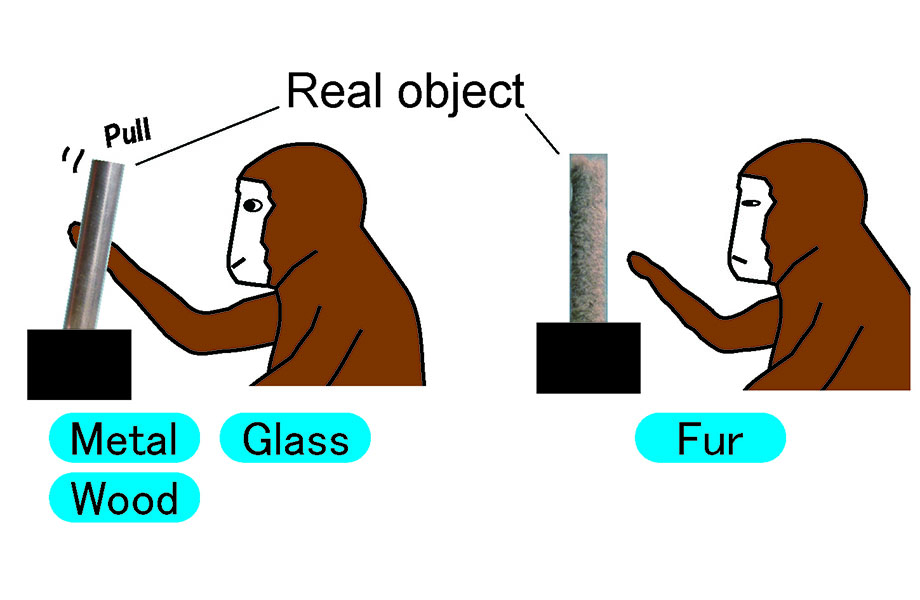Dependence of behavioral performance on material category in an object-grasping task with monkeys
Material perception is an essential part of our cognitive function that enables us to properly interact with our complex daily environment. For example, it is what enables us to discriminate the surface properties of objects, such as glossy/matte or wet/dry, and to use that information to properly interact (e.g., grasping) with those objects. In recent years, a number of studies have explored the neural mechanisms underlying material perception using both human and non-human subjects. One important aspect of material perception is its multimodal nature. When we see an object, we generally recognize its haptic properties as well as its visual properties. Consequently, one must examine behavior using real objects that are perceived both visually and haptically to fully understand the characteristics of material perception.
As a first step, we examined whether there is any difference in the behavioral responses to different materials in monkeys trained to perform an object grasping task in which they saw and grasped rod-shaped real objects made of various materials.
We found that the monkeys’ behavior in the grasping task, measured based on the success rate and the pulling force, differed depending on the material category. Monkeys easily and correctly grasped objects of some materials, such as metal and glass, but failed to grasp objects of other materials. In particular, monkeys avoided grasping fur-covered objects. The differences in the behavioral responses to the material categories cannot be explained solely based on the degree of familiarity with the different materials.
These results shed light on the organization of multimodal representation of materials, where their biological significance is an important factor. In addition, a monkey that avoided touching real fur-covered objects readily touched images of the same objects presented on a CRT display. This suggests employing real objects is important when studying behaviors related to material perception.

Collaborative Researchers
Atsumichi Tachibana (Dokkyo Medical University School of Medicine)
Takafumi Minamimoto (National Institute of Radiological Sciences, National Institutes for Quantum and Radiological Science and Technology)
Hidehiko Komatsu (Brain Science Institute, Tamagawa University)
Grants
KAKENHI grant, the Center of Innovation Program from the Japan Science and Technology Agency, National BioResource Project “Japanese Monkeys” of MEXT (NBRP)
The material rods were provided by the artists in Okazaki City and members of the Equipment Development Center at the Institute for Molecular Science.

